There are a number of powders and potions that preppers hold dear. You may not look at them this way but if we were living in a different time people would certainly view things like activated charcoal and essential oils as powders and potions. We use things like wizards to stop normal earthly processes from taking hold.
At the end of the day prepping truly comes down to understanding resources. Many people think its all about just stockpiling and assuring that you have enough stuff to outlast the disaster and those around you. We know better now, don’t we? We know that your stockpile is merely one piece of this journey and its often the base from which you look out upon.
Sooner or later we find ourselves embedded in the quest for self-reliance and independence. More time is spent exploring new skills and pushing towards self-sufficiency, than reading the doomsday predictions of financial mavens or fear mongering bloggers.
All roads lead to understanding and manipulating resources. If you can do these things than you can master any environment. Which brings us to the topic at hand Calcium Chloride. Yes, this road surfacing, deicing, food additive can be quite the ally in times of distress and disaster as well as prepping for such.
We all have a few bags of “salt” for when the winter brings its nasty precipitation, but do you know how to maximize this product?
#1. Desiccate
Maybe one of the most important things that you can use Calcium Chloride for is creating your own desiccants. In the world of storage and long term storage in particular, moisture is the enemy. It can ruin all sorts of things.
If you are considering creating a pantry, building and burying a survival cache or even just storing guns and ammo in a safe, desiccants should be a part of your plan. As preppers we cannot afford to lose these items that are so important to our success.
You can make desiccants using calcium chloride with a very simple process. The truth about this inorganic compound is that it will absorb more moisture from the air than any other substance in the desiccate game. That is nothing to take lightly. This can change the way you handle food storage.
#2. Ice Melt
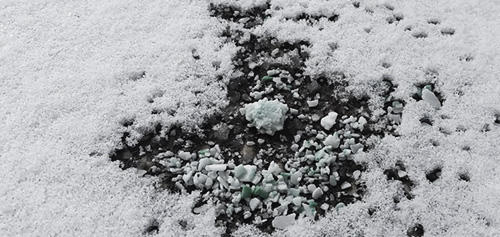 The most obvious and popular use for calcium chloride is to melt ice or prep surfaces for coming snow and winter weather. Depending on where you live this could have tremendous benefits. The important thing about calcium chloride as an ice Melter, you have to have plenty of this stuff to go around!
The most obvious and popular use for calcium chloride is to melt ice or prep surfaces for coming snow and winter weather. Depending on where you live this could have tremendous benefits. The important thing about calcium chloride as an ice Melter, you have to have plenty of this stuff to go around!
In wintry weather areas ice melt will most certainly be a powerful barter item once the people around you run out! Use this to your advantage.
#3. Calcium in Food
The sailors of old, and even some explorers, understood the importance of Vitamin C and would pick foods with higher Vitamin C content to take on their voyages. This was a very basic understanding of the critical nutrients the body needs to operate at its best and avoid disease.
Calcium Chloride is made up of another very important nutrient that the body needs and does not produce on its own. That is calcium. You can add calcium chloride to food in order to bump up the amount of calcium in meals.
If you have reached the bottom of the barrel, in terms of food storage, you could likely be suffering from nutrient and vitamin deficiencies. This is a safe and simple source of calcium that can be added to your food. Be sure that you understand quantities and ratios of use before just dumping it over your food.
Related: How To Make Calcium Supplements from Eggshells
#4. Electrolyte
Some modern drinks use calcium chloride as one of the electrolytes in their recipes. It is a salt but does not possess the sodium that many people are running from. I really like the idea of having an electrolyte mix for your bugout.
If you are pressed to make a bugout run in the heart of summer hydration will be a big deal and so will maintaining the salts in your body. While calcium chloride will not provide things like magnesium and other electrolytes to a mix it could be part of the mix or an added benefit.
#5. Preservation
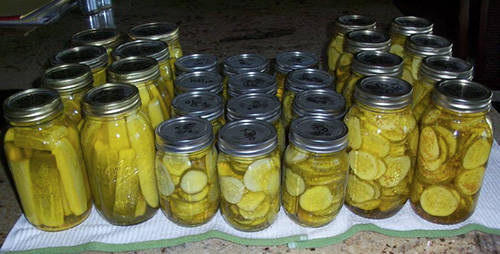 If you like eating pickles and pickled foods, you are likely getting a dose of calcium chloride from these foods whether you know it or not. This is because many companies use this substance to add salt and that salty flavor to things like pickles without rocketing the sodium through the roof.
If you like eating pickles and pickled foods, you are likely getting a dose of calcium chloride from these foods whether you know it or not. This is because many companies use this substance to add salt and that salty flavor to things like pickles without rocketing the sodium through the roof.
Of course, the first thing that comes to mind is, how about employing the very same method in our own canning and preserving practices. We could get the added benefits of the calcium while also getting that great salty taste and not suffering the high blood pressure consequences.
#6. Survival Gear Protection
We discussed desiccants in food storage and guns storage but what about in those bags that we pack. Preppers pack a number of different bags and we do so with all types of things inside. One of our bugout bags may have food, water, gear, ammo, tools, games and electronics in them. One of the rare things you hear from a person packing bags is that they put oxygen absorbers in their bags.
When you pack a bugout bag or a get home bag there is a good change that you wont touch that thing for a while! You might not even use the bag until you take it out of hiding and check the contents. How often are you doing that? To me, these are perfect candidates for the oxygen absorbing power of calcium chloride.
#7. Making Cheese
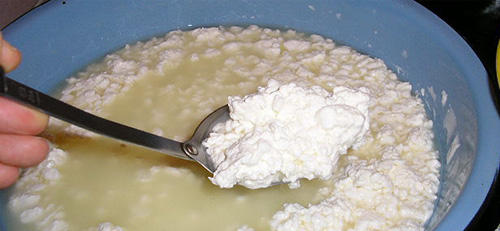 Things like buffering diets and collecting moisture all seemed pretty common sensical to me, in terms of using a salt in survival. What I would have never expected was that we could use this stuff in making cheese!
Things like buffering diets and collecting moisture all seemed pretty common sensical to me, in terms of using a salt in survival. What I would have never expected was that we could use this stuff in making cheese!
Well, it would appear that some kinds of cheese require a little bump to make the curds come together. Calcium chloride absorbs the moisture in the curds and allows them to bind and become a solid mass that can then be manipulated into all sorts of cheeses.
Just another reason to keep this stuff on the shelves of your survival pantry.
The Substances that Surround Us
While researching the topic of calcium chloride in survival, I came across some very interesting information and I couldn’t help but wonder how people figured out how to do these things. Who pulls inorganic compounds from the earth and find that they can do everything from melt ice to make cheese!?
I think it all goes back to my original point. If you are a prepper or just a steward of this planet, one of the very best things you can do is forge a path that helps you better understand all the creatures, compounds and resources this planet has to offer.
You may also like:
 33 Essential Foods to Stock Pile
33 Essential Foods to Stock Pile
What Happens When You Pour Salt Into A Cabbage (Video)
My First Batch Of Canned Cheese
When It Comes To EMP Preparedness You Only Have Two Choices
Baking Soda – 112 Uses (WWII Series)
Why Is FEMA Tracking Down Preppers? This Is How They Prepare For A Food Crisis

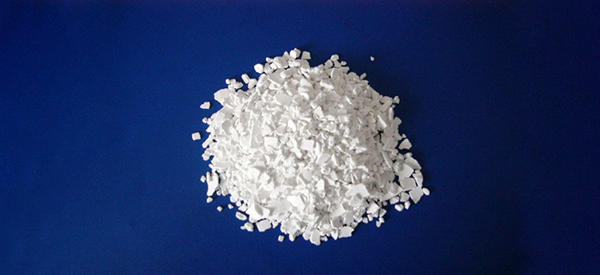





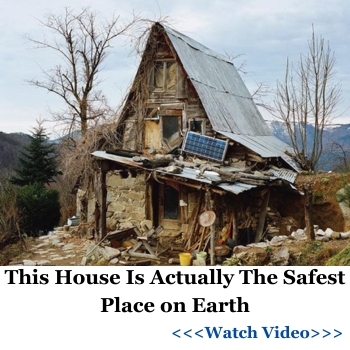







Interesting article. However, you’re using the word desiccate, a verb, as a noun. The noun form of the word is desiccant. Desiccate is the action performed by a desiccant.
Yet you somehow understood the context as did we all. Thanks for the English lesson
Perhaps GMcChicago is a teacher. I am a retired teacher & often have to bite my tongue so as not to correct someone’s grammar or spelling. Old habits die hard. Lol
Well “hitman”, conversations between neighbors over the backyard fence are one thing and published articles instructing people on what to do in a given emergency is another. When an “author” feels he or she has something worthwhile to say; that is, to write about, they want to be perceived as an authority and in order to accomplish that at multiple levels, they need to have command of the English language and use proper grammar.
Look at the author’s #6, second paragraph, first sentence for example: “When you pack a bugout bag or a get home bag there is a good change that you wont…” Obviously there is an error in the sentence that you caught. You understood what it meant . . . you know the author meant “chance” instead of “change” but you let it slide because you’re not an English teacher! My point is, if you’re going to write something to publish, proof read it and get it right. Don’t expect everyone to go along with the “dumb it down” practice.
You did catch that “change” vs “chance”, didn’t you?! (rhetorical)
Glad you wrote about this substance. People don’t seem to understand the amount of damage salt or refined sugar for that matter can do to your body. At the same time, everything has it’s usefulness, but to reap the benefits of sodium chloride without increased sodium levels and thus a salty diet, is a big deal for people with medical issues and follow special diets. It’s like using Stevia or honey versus refined sugar or carob versus actual chocolate.
Anything that has an important use or benefit is often a priority item, but something with this many uses means greater flexibility from our stored supplies. This should go right next to the baking soda, petroleum jelly, and duct tape.
Thanks for the article, but some more information would have been helpful such as, is there any extra process to use this stuff as a desiccant? If it absorbs moisture from the air does it need to be treated first (dried out) ?
Electrolytes? How much to use?
Preservation? How much to use?
Survival Gear Protection I can figure out
Making Cheese? How much to use?
Can dampened CaCl be reclaimed by drying it out in oven or sun to reactivate it as a desiccant? I wouldth think so.
Would it be ok to make little cotton or fine mesh bags to contain it and put them in your things, like you would lavender bags in your clothes.
CaCl will liquify when it absorbs enough water so a bucket or pan would be neccessary to use as a desiccant. I’m hoping that I can set it in the sun to dry and reuse it myself. Though, I’m generally disappointed with its effectiveness in my cellar. It is a liquid already and haven’t noticed any difference in humidity in the cellar. I will have to resort to ventilation which I didn’t want to do because I wanted to keep the temperatures as low as I could over summer.
Wow…ventalation isn’t the answer in my situation. A tiny fan(40cfm) and my cellar is dripping worse than ever. The ventilation is bringing in 70 degree moist air into a 55 degree room and that is a recipe for rain. Guess I’m going to have to fall back on a dehumidifier which is going to produce heat, which I don’t want.
When they’d say about a house, that it has a ‘nice dry cellar’ that’s presumably because they often arent. Not an automatic feature! Water table and soil will have an effect too. What a shame!
Thanks for your experience with CaCl. If it does dry out in the sun it’s going to make a hard lump and need breaking up again probably.
I ordered this for our RV while in storage.
https://www.amazon.com/gp/product/B000H0XFCS/ref=oh_aui_detailpage_o02_s00?ie=UTF8&psc=1
I have 3 bunkers, had the same problems even w/ dissicant or home made damp rid.
Still had ‘rain’, I put a fan to blow across the ‘damp rid’ and the ‘rain’ stopped.
ventilation is the key, NOT outside ventilation just air movement to the ‘damp rid.
Note this works so well you will have to dump your collected water every few days and add more calcium to top pot. and yes you can save the used calcium as it solidifies in the bottom cachement over time.
@ Spike. I THINK that the electrically powered dehumidifier is really nothing more than a small AIR CONDITIONER! BUT… instead of cooling the room with the dehumidified air from the evaporator coil, they REROUTE the colder/dehumidified air and merge it into the hot air stream coming off of the refrigerant condenser coil. Thus, I think that they contribute no cooling and very little heat to a room. AND, I also suspect that your sealed-off from the outside, below ground level basement may well be able to absorb/dissipate that small amount of heat.
I saw a dehumidifier [at Walmart, I think] that circulates the cold, dehumidified air over the CONDENSER coil to reduce the amount of heat released to the room. Due to inefficiencies, it’s not exactly an even exchange so admittedly, there will be a slight imbalance tending toward the warmer side. But it does beat having rain in your basement!
Another use for this stuff is in making activated charcoal, which has a bunch of uses on its own. Make your own charcoal, grind it finely with calcium chloride, and add water. The calcium chloride will heat up, stressing the charcoal and creating tiny pits and cracks in it – activating it. When the reaction dies down just rinse the charcoal and leave it out to dry.
Claude, why aren’t my comments being posted.
I’m just going to come back on very quickly to reply, Spike. If you don’t get an error message from the website itself, your comments WILL be posted just not immediately. May even take a day for your comments to show up. Claude has tried to resolve the issue but sometimes still keeps happening.
This article is misusing the names of common products. The article mentions Calcium Chloride, which is extremely corrosive and releases odors when wet that can literally knock you over and can be deadly in confined areas.It is used most commonly to treat pool water to kill bacteria. We have all smelled that strong chlorine smell in a indoor pool. It is usually caused by Calcium Chloride.
If he means Sodium Chloride, common table salt in its most common form, that is also corrosive and while it absorbs moisture it causes rust on iron.
Overall, if the common names of readily available products are being misused how much trust can one put into the writer ?
I’m sorry, but you are incorrect. Chlorine is used in pools, and in some places Sodium Hypochlorite is used (same ingredient used in bleach), Calcium Hypochlorite could also be used. Calcium Chloride and Potassium Chloride are common replacements for table salt (Sodium Chloride) and are also used in Sports drinks and pickles as well as road deicing and as a desiccant as the author has said.
Spike: I have the same issue with my jeep! Often in winter I’ll get in and be driving and have it all of a sudden rain on me. The first time it happened, I was stymied. Then I figured it was the fiberglass roof and the great ventilation via openings from rubber gaskets that aren’t very tight.
I finally got a long narrow dust ‘mop’ to ‘dust’ the roof before I drive off.